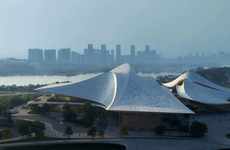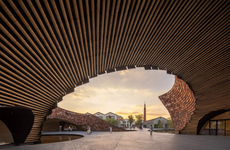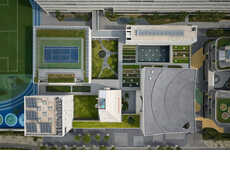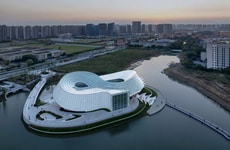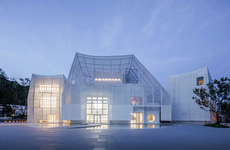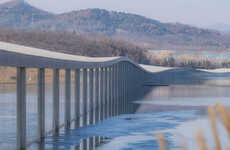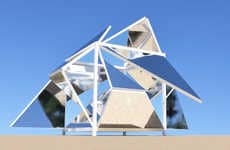
This Folk Art Gallery Features Fragmented Roofs on a Sloping Hill
David Ingram — October 19, 2015 — Art & Design
References: kkaa.co.jp & dezeen
The 'China Academy of Arts' features a zigzagging roof pattern meant to mimic the look of a tiny village.
Located near the city of Hangzhou on China's Eastern coast, this 53,820-square-foot piece of architecture sits on the site of a former tea plantation. The overall design was created by Japanese firm Kengo Kuma & Associates and features a series of fragmented buildings built on top of a gradually sloping forest hillside. Each section was specifically made to look like its own separate small house, and the grey tile-covered rooftop adopts a unique and eye-catching zigzagging pattern.
Extra tiles were also utilized to form unique decorations for the inside of the building. Tiles were placed between mesh gaps on the wall so that when hit by the sun, they actually create a fragmented shadow pattern along the academy's floor.
Located near the city of Hangzhou on China's Eastern coast, this 53,820-square-foot piece of architecture sits on the site of a former tea plantation. The overall design was created by Japanese firm Kengo Kuma & Associates and features a series of fragmented buildings built on top of a gradually sloping forest hillside. Each section was specifically made to look like its own separate small house, and the grey tile-covered rooftop adopts a unique and eye-catching zigzagging pattern.
Extra tiles were also utilized to form unique decorations for the inside of the building. Tiles were placed between mesh gaps on the wall so that when hit by the sun, they actually create a fragmented shadow pattern along the academy's floor.
Trend Themes
1. Zigzagging Roofs - The use of zigzagging roof patterns in architecture offers an opportunity for disruptive innovation in sustainable design and energy efficiency.
2. Fragmented Buildings - Creating fragmented buildings that mimic separate small houses opens up possibilities for disruptive innovation in flexible and modular construction methods.
3. Tile Decorations - Incorporating tiles as unique decorations on building interiors presents an opportunity for disruptive innovation in artistic and customizable architectural designs.
Industry Implications
1. Architecture - The architecture industry can explore disruptive innovation in sustainable designs using zigzagging roof patterns and fragmented buildings.
2. Construction - The construction industry can leverage disruptive innovation by adopting flexible and modular construction methods inspired by fragmented buildings.
3. Art and Design - The art and design industry can embrace disruptive innovation by incorporating unique and customizable tile decorations in architectural designs.
1
Score
Popularity
Activity
Freshness

